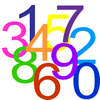We sometimes have unsolved problems which require solutions. If there are any below, do consider having a go at them, and send us your solutions.
You may be interested in the article we have written, which explains what we are looking for when we decide which solutions to publish.
article
Primary Children's Mathematical Recording
This article for teachers outlines different types of recording, depending on the purpose and audience.

list
Features



article
A good foundation for number learning for five year olds?
This article, written by Dr. Sue Gifford, evaluates the Early Learning Numbers Goal in England, in the light of research.

list
Recent Solutions
list
Pattern and Structure
The tasks in this feature for Primary teachers will help you to develop learners' awareness of pattern and will serve as a springboard to exploring mathematical structures.
article
The Value of Two
Ruth Trundley outlines her doctoral research and concludes that development of an understanding of cardinality is a crucial element of counting that can be overlooked.
article
Developing Number Through Tidying Up
This article describes how one nursery setting focused on tidying up time as a context in which to explicitly target the development of number and calculation skills.

list
Working with a grown-up?
Lower primary tasks designed for an adult and child to work on together, adapted from some of our activities for developing group-working skills.
article
Mathematical problem solving in the early years: developing opportunities, strategies and confidence
In this article for Early Years practitioners, Dr Sue Gifford outlines ways to develop children's problem-solving strategies and confidence in problem solving.

list
Maths at Home

list
Maths at Home - Summer Challenges 2024
The tasks in this collection are ideal to work on at home over the summer, perhaps with friends and/or relatives.
article
Young Children's Mathematical Recording
In this article, Janine Davenall reflects on children's personalised mathematical recordings as part of a small research project based in her Reception class.



project
TSA NRICH Day October 31st 2018

article
Early Number Sense
This article explores the basic foundations of number sense and outlines relevant research in this area.
article
Subitising
In this article for EY practitioners, Dr Sue Gifford outlines what we mean by subitising and how we can teach it.
article
Place Value: The Ten-ness of Ten
This article develops the idea of 'ten-ness' as an important element of place value.

article
Rich mathematics
In this very brief article, the NRICH Team outlines what they understand by the term 'rich mathematics'.
article
How Can I Support the Development of Early Number Sense and Place Value?
This article for primary teachers expands on the key ideas which underpin early number sense and place value, and suggests activities to support learners as they get to grips with these ideas.
article
Dot Card Games
These games devised by Jenni Way use dot cards which will help children see the structure of numbers 1-6 and give them confidence as they begin to add and subtract these numbers.
article
The importance of shape and space in the early years
In this article for EY practitioners, Dr Sue Gifford discusses children's early spatial thinking and how this predicts their mathematical understanding and achievement.
article
Models in mind
This article looks at how models support mathematical thinking about numbers and the number system
article
Maths at Home
This article for teachers, parents and carers offers guidance on how learners can get the most out of the activities in our Maths at Home features.

list
Related teacher playing with shape
More activities with 2-d shape for younger and older children
article
Using dice games in the classroom
This article outlines some of the benefits of using dice games in the classroom, especially as a tool for formative assessment.

article
Welcoming Your New Class
What might your first lesson with a new class look like? In this article, Cherri Moseley makes some suggestions for primary teachers.
list
Geometric thinking - teacher articles
This series of three articles discusses the development of geometric thinking.
article
Getting the balance right
In this article for primary teachers, Ems shares some common misconceptions surrounding the equals sign, and suggests ways to help learners develop their understanding.
article
Encouraging primary children to work systematically
This article for primary teachers suggests ways in which to help children become better at working systematically.

list
Curriculum
article
ACME Report: Developing able young mathematicians
Lynne McClure gives an overview of the ACME report 'Raising the bar: developing able young mathematicians', published in December 2012.




list
Measures Books

list
Tasks for an adult and child
This collection of tasks are for an adult and child working together.

list
Full Book List
interactivity
Red or Black Spinner
A simple spinner that is equally likely to land on Red or Black. Useful if tossing a coin, dropping it, and rummaging about on the floor have lost their appeal. Needs a modern browser; if IE then at least version 9.

problem
Favourite
Seesaw Shenanigans
A group of animals has made a seesaw in the woods. How can you make the seesaw balance?

list
Full List of Books

list
Number Books

list
Geometry Books
article
Progression in Primary Probability
The beginnings of understanding probability begin much earlier than
you might think...
article
History of Money
If you would like a new CD you would probably go into a shop and buy one using coins or notes. (You might need to do a bit of saving first!) However, this way of paying for the things you want did not always exist. Find out more ...
article
Integrating rich tasks - Activity 1.3
This professional development activity encourages you to
investigate what is meant by higher-order thinking skills.
article
Number sense series: A sense of 'ten' and place value
Once a basic number sense has developed for numbers up to ten, a
strong 'sense of ten' needs to be developed as a foundation for
both place value and mental calculations.

list
Which Way?

list
Maths to Take Your Time Over (5-7)
These tasks are worth exploring over a few days or even a few weeks and may involve printing or interactives.


list
Being resourceful




list
More Activities Using Cubes Lower Primary
More lower primary activities which make use of interlocking cubes.
list
Developing Group-working Skills
This collection of tasks encourages children to build group-working skills.
list
Handling data ( Statistics)
These challenges will test your understanding of different types of information.
article
Reasoning: Identifying Opportunities ( Article )
In this article for primary teachers we consider in depth when we might reason which helps us understand what reasoning 'looks like'.
article
Going Deeper: Achieving Greater Depth with Geometry
This article for Primary teachers outlines how providing opportunities to engage with increasingly complex problems, and to communicate thinking, can help learners 'go deeper' with geometry.
article
Using NRICH Tasks to Develop Key Problem-solving Skills
This article, written for primary teachers, discusses what we mean by 'problem-solving skills' and draws attention to NRICH tasks which can help develop specific skills.
article
Why dialogue matters in primary proof
In this article for Primary teachers, Ems explores three essential features of proof, all of which can be developed in the context of primary mathematics through talk.
article
On Problems and Problem Solving - Looking Backward and Forward
Jenny Piggott reflects on the event held to mark her retirement
from the directorship of NRICH, but also on problem solving itself.
article
Group-working skills
This article for teachers suggests a range of activities to help children get better at working in groups.
article
Logic, and how it should influence our teaching
Providing opportunities for children to participate in group
narrative in our classrooms is vital. Their contrasting views lead
to a high level of revision and improvement, and through this
process they become more aware of "thinking". This article looks at
the way we handle these narratives.
article
Integrating rich tasks - Activity 1.5
This professional development activity encourages you to
investigate what pupils are doing when they problem solving.
article
Numbers and Notation - Ambiguities and Confusions
While musing about the difficulties children face in comprehending number structure, notation, etc., it occured to the author that there is a vast array of occasions when numbers and signs are used in anomalous ways; often these are at the earliest stages, when they must be enormously confusing. However, they also frequently happen in adult situations.


list
Being Playful, Becoming Engaged
The problems in this feature will help to inspire your learners to be playful, become engaged, and then think deeply about the mathematical contexts that underpin them.

list
Interactive Tasks and Games
Here you can find all the primary non-Flash interactive resources and games.

list
Being Collaborative

list
Puzzling with Paper
This feature challenges you to create different shapes by folding A-sized paper. Grab some paper and get folding!

list
Number Stage 1
list
Developing Group-working Skills
This collection of activities offers an opportunity for you to focus on improving children's group-working skills. Read the articles to find out how group tasks help to develop children's problem-solving skills and our reasons for selecting these particular tasks.
list
Measurement
These activities are all about measuring different things, including time! Can you try and make a sensible guess about the size of something before you measure it?
list
Your solutions

list
Related resources

article
Working with Higher attaining mathematicians
In this article for teachers, Bernard describes ways to challenge higher-attaining children at primary level.
article
Group-worthy tasks and their potential to support children to develop independent problem-solving skills
In this article for teachers, Jennie Pennant outlines how group-worthy tasks support the development of children's problem-solving skills.
article
Natural Born Mathematicians
Helen Joyce interviews the neuropsychologist Brian Butterworth
whose research has shown that we are all born with a "built-in"
sense of cardinal number.
